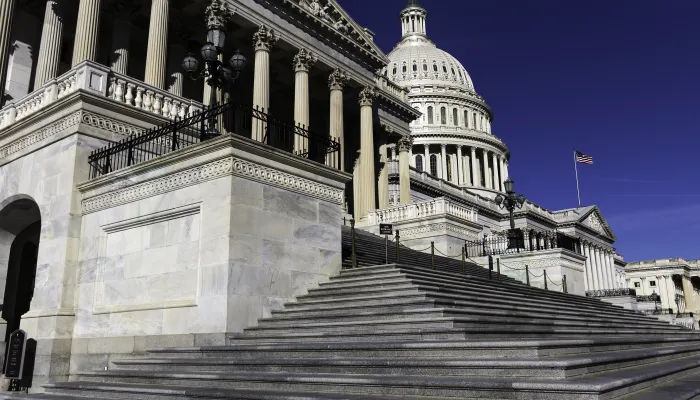Low-Hanging Fruit for Debt Ceiling Discussions
Update: Check out our release on these "commonalities" here.
As Vice President Biden and several members of Congress continue working toward a solution that responsibly raises the debt ceiling, several congressional leaders have been throwing around the idea of a serious "down payment" on reducing deficits and debt in exchange for votes to raise the ceiling. Here at CRFB, we have argued that, ideally, lawmakers would enact a multi-year debt reduction plan that looks at each area of the budget for savings. But we recognize that there might not be enough time for a comprehensive deal like that before we run the risk of defaulting.
If a down payment is now going to take center stage, a good place to start would be to take a look at where there's already consensus. A Washington Post article today notes that negotiators in the Biden discussions have identified as much as $200 billion in overlapping savings over ten years. We estimate it to be quite a bit larger.
The four central fiscal plans in town -- the President's Framework, the House Republican Budget, the Fiscal Commission's plan, and the Debt Reduction Task Force -- tend to agree on a sizable list of deficit-reducing policies. These range from supporting some type of discretionary caps, to reducing farm subsidies, to selling excess government assets, to in-school interest subsidies. All in all, we estimate that all of these policies add up to somewhere between $1.1 and $2.6 trillion in primary savings over ten years, depending on the extent they are implemented.
Raising the debt ceiling in a timely manner must be a central priority for lawmakers, but so too must wrestling control of our budget away from automatic pilot. If lawmakers chose to go the "down payment" route instead of a comprehensive plan or enacting yearly deficit or debt targets, then they must revisit the true drivers of our long-term imbalances.
| Deficit-Reducing Policies | Savings (Billions) |
President's Framework | House Republican Budget | Fiscal Commission | Debt Reduction Task Force | |
| Low | High | |||||
| Discretionary Caps | $580 | $1,600 | X | X | X | X |
| Reduce Farm Subsidies | $5 | $35 | X | X | X | X |
| Enact Tort Reform | $0 | $55 | X | X | X | X |
| Reform PBGC | $5 | $10 | X | X | X | X |
| Eliminate In-School Interest Subsidies on Student Loans | $20 | $65 | X | X | X | |
| Auction Spectrum Licenses | $25 | X | X | X | ||
| Sell Excess Federal Property | $10 | $15 | X | X | X | |
| Reduce Health Fraud and Correct Overpayments | $10 | $35 | X | X | X | |
| Eliminate Fossil Fuel Tax Preferences | $20 | $40 | X | ? | X | X |
| Reduce Medicare Payments to Drug Companies | $55 | $110 | X | X | X | |
| Reduce State Medicaid Gaming | $25 | $50 | X | X | ||
| Increase Federal Civilian Pension Contributions | $65 | $120 | X | X | ||
| Use Chained CPI for All Inflation-Indexed Programs* | $255 | X | X | |||
| Increase Medicare Cost-Sharing | $25 | $130 | X | X | ||
| Total Primary Savings | $1,100 | $2,545 | ||||
| Interest Savings^ | $200 | $500 | ||||
| Total Savings | $1,300 |
$3,045 |
||||
Note: All numbers rounded to nearest $5 billion.
*CBO estimates that switching to the chained CPI would increase revenues by $87 billion, reduce Social Security outlays by $112 billion, and reduce other spending by $56 billion over ten years. To read more about the merits of switching to the chained CPI, see the Moment of Truth project's latest paper.
^Estimated very roughly from a rule of thumb based on CBO's interest estimates for alternative policies not in the current law baseline.
It's frustrating that the places where there is consensus, between at least three of the plans, tend to ignore Social Security imbalances and health care spending, which are set to be among the largest drivers of future deficits. Especially now that the Trustees of the Social Security and Medicare programs have given lawmakers yet another warning about the unfunded future obligations, discussions need to focus on shoring up the funding gaps in these programs. (Click here for our analysis of the Social Security Trustees report.) Doing so would help considerably in putting our budget on a sustainable path.
If lawmakers were to enact all of the changes above it would represent a healthy start, but would not be sufficient to stabilize the debt over the long-term. Further measures would be needed -- including Social Security and health care reform as we note above, and reforming the tax code. A process (such as a debt failsafe) can help to force and enforce such actions, but at the end there is no substitute for political courage.


